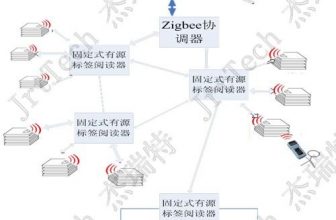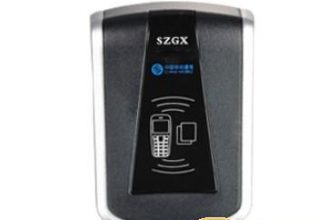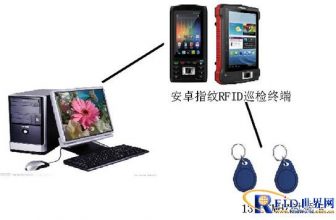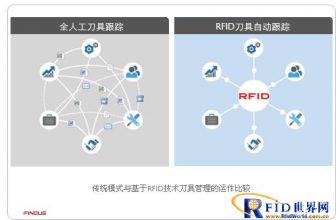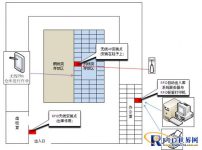
RFID inventory management solutions for the telecommunications industry
[ad_1]
1. Background information
Radio Frequency Identification (RFID), also known as E-Tag, is a technology that uses radio frequency signals to automatically identify target objects and obtain related information.
As one of the pillar products of the national economy, the telecommunications industry, with the continuous growth of business volume and increasing demand, warehouse management is also facing increasing challenges. How to reduce inventory investment, strengthen inventory control, and reduce logistics and distribution Expenses and increasing the utilization rate of space, personnel and equipment have become common concerns of the storage departments of all telecom enterprises.
In the field of labeling, barcode technology has been very mature and widely used, and now almost all products are labeled with barcodes. Due to storage space limitations, barcodes can usually only identify product types. Compared with barcodes, RFID tags have the following advantages:
Fast reading speed
The identification information of hundreds of items can be read in an instant, thereby improving work efficiency;
Large storage space
It can realize the whole process management and tracking of a single item, and overcome the limitation that the barcode can only manage a certain type of item;
Long working distance
Can realize remote management of items;
Strong penetrating ability
It is possible to obtain item information through packaging materials such as paper, wood, plastic and metal;
High flexibility
Labels can be made into strip, card, ring and button shapes according to different applications.
The application of RFID in the warehousing industry helps companies reduce costs, control and reduce inventory, and reduce costs (including labor costs). The RFID warehouse management system can increase the space utilization rate by 20%; the execution cost of the physical inventory can be greatly reduced; the shipping accuracy can reach 95%; the billable return is reduced by 80%; the safety inventory is reduced; the labor cost saving can be up to 40% . These ultimately bring huge economic benefits to the warehouse.
2. The status quo of warehouse management in the telecommunications industry
The goods that need to be managed in the telecommunications industry include all kinds of pipeline materials, a small amount of bulk electronic equipment, etc. According to the situation that Xindeli understands through communication with customers, currently there are no shelves in most warehouses, and some materials are stacked in boxes, and there are a small amount of materials. Stacked in the open air, management and inventory work are performed manually.
At present, the material management in the telecommunications industry is mainly by the center staff to enter the receipts (receiving orders, issuing orders, return orders, transfer orders, etc.) that the warehouse administrator fills in and return to the center into the current warehouse management system for in and out of the warehouse. Management. To a certain extent, the materials in the warehouse are managed, but the following problems exist:
The entry and exit of goods is managed only through bills, and the specific status of the physical objects cannot be monitored.
According to the bill management, there is a serious lag in time, and it is impossible to monitor the status of materials and inventory in real time.
Work such as entering and leaving the warehouse, finding goods, and taking inventory needs to be performed manually, which is a large workload and low efficiency.
If there is a miscarriage, missed shipment, etc., it will take a long time to find out.
3. Requirements for RFID inventory management solutions in the telecommunications industry
1 All products in the warehouse passRFIDStandardized management of electronic tags;
1 The record information of each network cable RFID label includes: supplier name, frame purchase contract number, material name, material code, single box/roll network cable length (m), tag number.
1 The record information of each copper core wire RFID label includes: supplier name, frame purchase contract number, material name, material code, length of each copper core wire (meters), label number; in inventory statistics, one RFID tag representative can be counted The length of a pile of copper core wires (m).
1 The network cable and copper core wire are packaged as follows:
Indoor network cable: 305m/box
Outdoor waterproof network cable: about 500 meters/roll
Copper core wire: 200 meters/roll, 5 rolls/bag
2 Print one RFID label for each box/roll of network cable according to box and roll; Print one RFID label for each type of copper core wire according to variety and supplier;
3 Read, write, modify and print RFID tags;
4 When entering and exiting the warehouse, use RFID hardware equipment and software to automatically record the RFID tags on each box in and out of the warehouse with the network cable calculated by box and roll; if it is copper core wire calculated by variety and supplier, use RFID data manually The collector scans and records.
5 Perform statistical inquiries on commodities in and out of the warehouse;
6 The function of inventorying the warehouse from time to time;
7 Provide early warning for insufficient inventory.
Four. System framework diagram

Physical hardware configuration:
1. Handheld RFID data collector (the function is to complete inventory.)
2. RFID label printer (complete the printing of the RFID soft label when the goods are received)
3. RFID tags (RFID tags for outer packaging of goods)
4. RFID fixedReader(Complete the quick exit and warehousing at the door of the warehouse)
5. Wireless router

The RFID automatic warehousing management system is mainly divided into two parts: one part is server software, the other part is PDA software. The server software part mainly includes user management, RFID management, warehousing management, warehousing cancellation, inventory management, outbound management, statistical management, inventory query, log management, inventory early warning management; and includes the control system of RFID hardware. The PDA software includes user login, warehousing management, inventory management, outbound management, and inventory early warning.
5. Features of RFID inventory management solution:
1. RFID real-time non-contact management, large capacity and data processing capabilities
2. The system tracks the goods in real time
3. Virtual inventory tracking
4. Data acquisition is efficient and accurate
[ad_2]


